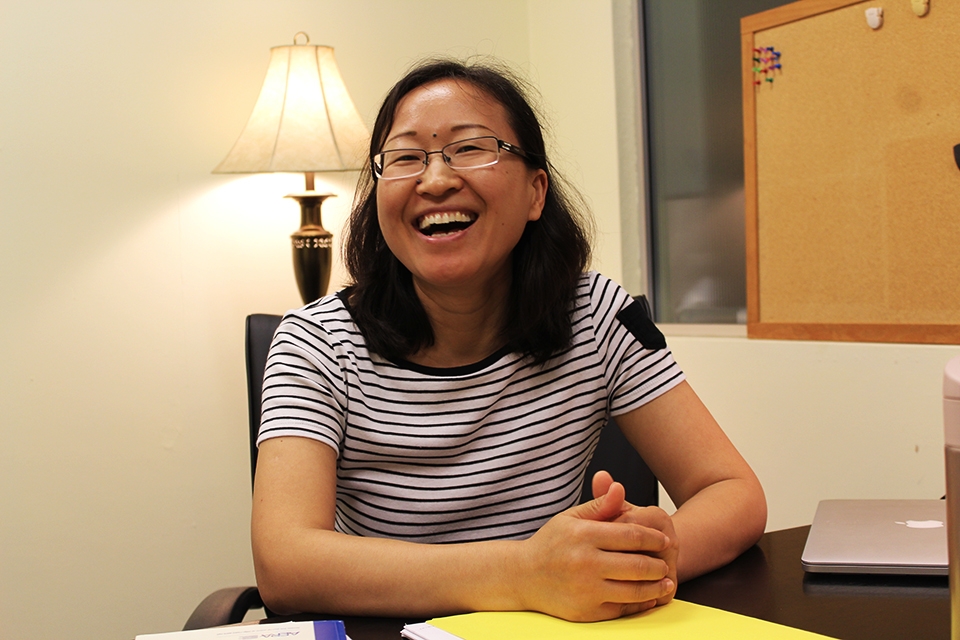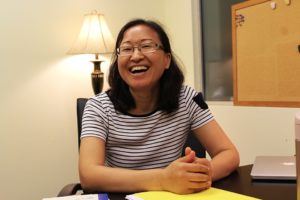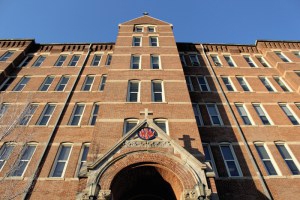
Chao is partnering with a local library project to study the effects of a bilingual picture book and on refugees.

Chao is partnering with a local library project to study the effects of a bilingual picture book and on refugees.
Kaye Burnett | Staff Writer
Education professor Xia Chao’s daughter was 12 years old when she moved with her family from China to the United States nine years ago. Through the experience of observing and helping her daughter as an English as a second language (ESL) student, Chao developed a personal passion for learning more about how immigrant families and their children interact with teachers to adapt to their new homes.
“As a parent, I was very curious and enthusiastic about what I could do [to help my daughter learn],” Chao said.
Now Chao, an education researcher awarded by the American Educational Research Association and the Literacy Research Association, is working on a new project involving ESL students in the Pittsburgh area called Savings Stories. Saving Stories is a collaborative effort by Baldwin-Whitehall teacher Renee Christman and Paul Kelly, librarian at Whitehall Public Library, to turn stories from local refugee families into bilingual picture books.
These picture books contain stories collected from the refugee families in their native languages, then translated side-by-side into English and illustrated by Baldwin-Whitehall students. The books are then professionally bound and added to the shelves of the Whitehall Library for use by the public, according to Christman. There are also sets of books at local schools and organizations that help resettle refugees, she explained. Some of the stories are fables from the refugees’ home countries, while others are simple picture books for very young children.
Christman said she got the idea for the project almost four years ago, when she realised that many of her refugee ESL students had no access to books in their native tongues.
“Many of these families fled their countries with only a suitcase or two,” Christman said. “They didn’t bring books with them.”
Chao will be involved in the project as an ethnographic researcher, which means she will observe if and how the books impact the relationship between refugee parents, their new community and their children’s teachers.
“I want to know how this project influences refugee family literacy and their language use,” Chao said. “Nationwide, there is a big gap between refugee families and their school … This might be a way [for the parents] to get more involved in their children’s school life.”
Chao explained that parental involvement in school is often limited for refugee families, due to language and cultural barriers. She sees the Saving Stories project as a possible bridge between parents, public schools and the broader community. She also thinks the books will help students learn English while preserving their native language.
“The research shows that if [ESL students] are better in their first language, they can better learn their second language,” Chao said.
As an ethnographer, Chao will visit the refugee families involved in the project for two hours every other week for two years to study how they use language to interact with each other and the community. She said she will even attend events and holidays with the families when possible.
“If I want to know the truth of a particular community, I have to immerse myself into that community,” Chao explained.
As a professor in Duquesne’s School of Education, Chao hopes that her research will give up-and-coming teachers more knowledge about their future students, some of whom may be refugees or immigrants.
“The more we know, the better we teach,” she explained.
There is a good chance that graduates from Duquesne’s education school will work with refugee students some time in their careers, especially if they stay in the Pittsburgh area. According to a spokeswoman for Jewish Family & Children’s Service of Pittsburgh, more than 8,000 refugees have moved into the Pittsburgh area in the past five years.
Most of those are “secondary migrants” — refugees who came into the United States in a different city, then moved to Pittsburgh to be closer to friends and family. Most come from Syria, the Democratic Republic of Congo, Somalia or Bhutan, with Bhutanese refugees making up the largest share.
“Pittsburgh is moving towards a beautiful trend,” Chao said, of the city’s growing immigrant and refugee population. “Just based on my own observations [as a volunteer ESL teacher], I know that refugees feel very welcome here.”
According to Chao, her research on Saving Stories is funded by a $10,000 faculty development grant from Duquesne and will be completed in 2019.



